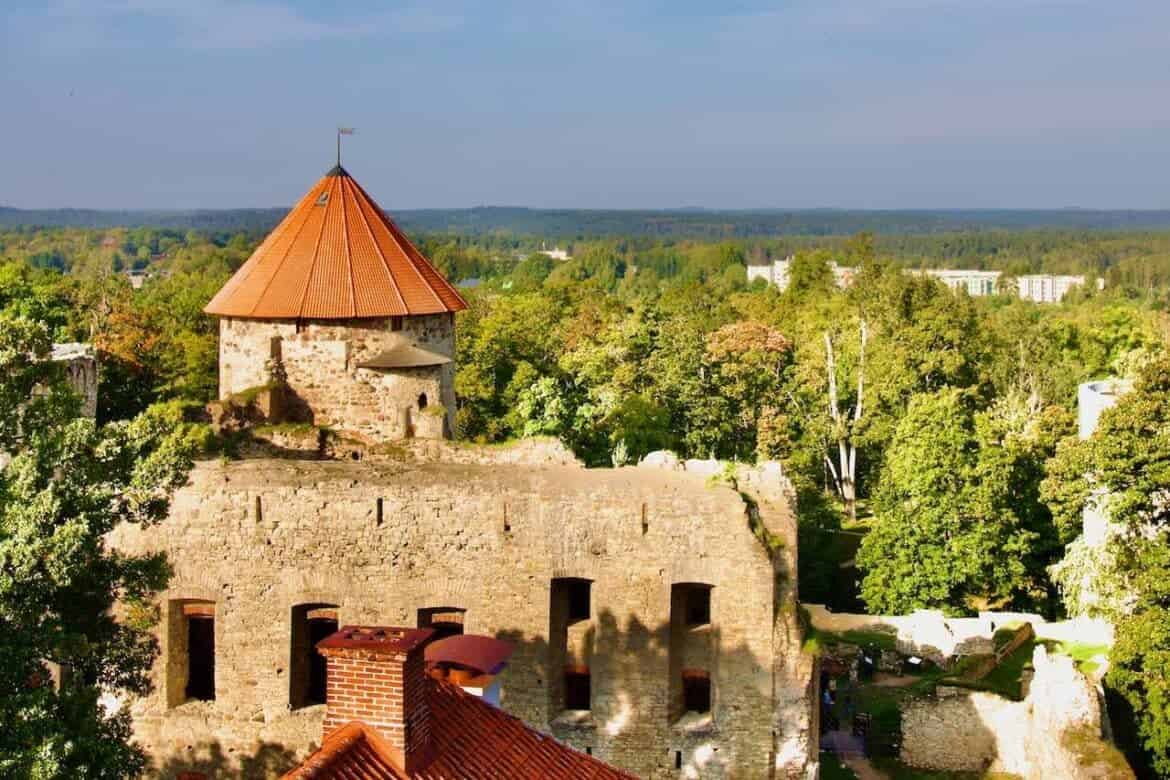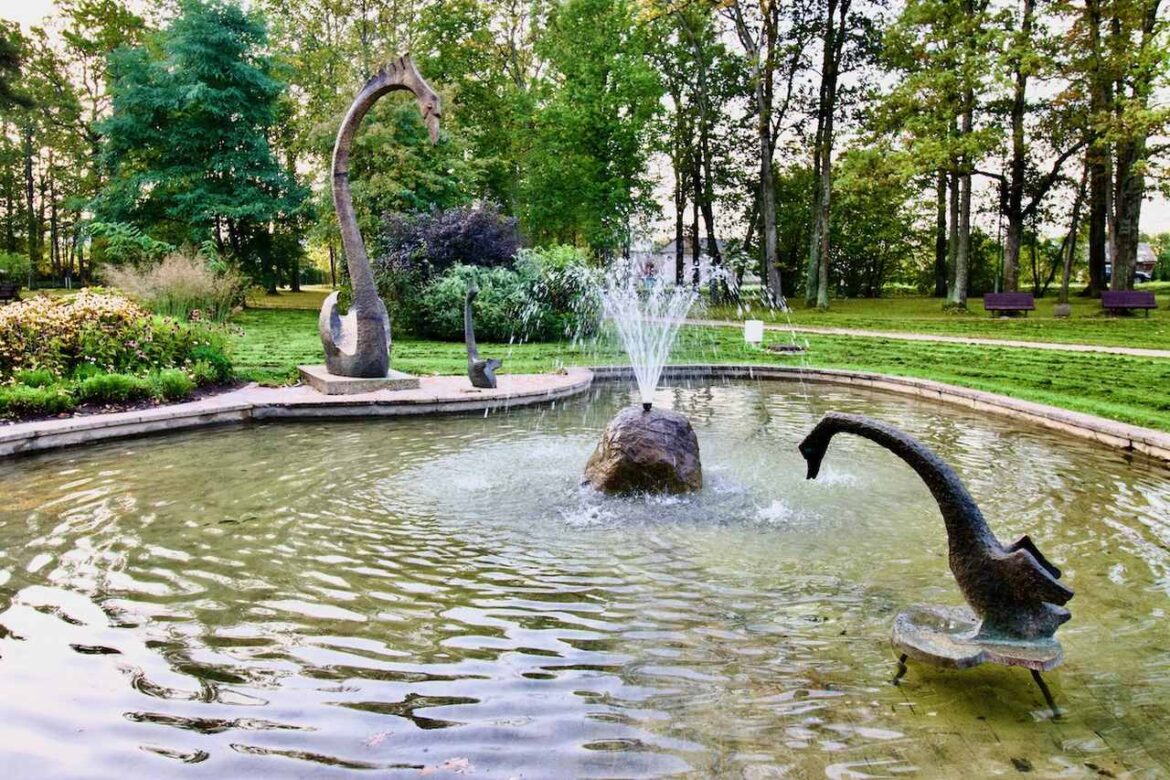There was a time when castles were all the rage in the Vidzeme region of Latvia. Here’s our guide.
The Vidzeme region in the northeastern part of Latvia, borders Estonia to the North and Russia to the East. Over one-third of the diverse forests of Latvia cover half of this area. Sprinkled amongst the trees are stone castles – a trend started during the thirteenth century by the Germanic knights who once occupied this territory.
During the latter half of the eighteenth century and the beginning of the nineteenth century, the arrival of wealthy Baltic German noblemen saw a revival of this trend which ended in 1920 when the agrarian reform law transferred land from these nobles to Latvian farmers.
This medieval heritage is the foundation of a region area rich in historical buildings.
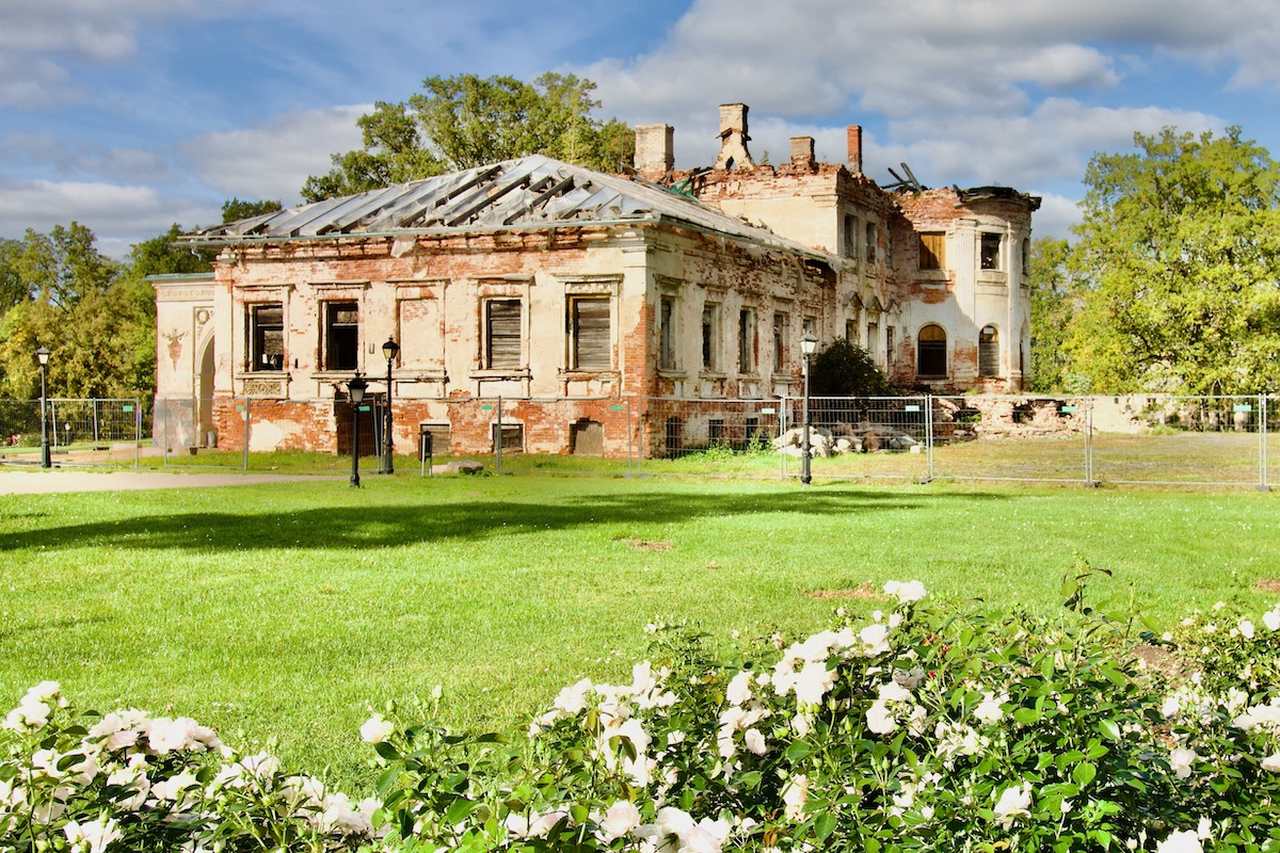
1. The Castles of Gulbene in Vidzeme, Latvia
Gulbene was known in German as Schwanenburg and the Latvian name is taken from gulbus, meaning swan a symbol of the town. Swans are featured on its coat of arms. A large bronze swan feeding a cygnet overlooks the pond in Gulbišu Parks (Swan Park).
Many years ago the centre of Gulbene was Vecgulbene Manor on the outskirts of the town and underwent a dramatic revival from 1802 when it became the property of the family of Baron von Wolff in 1802. Members of this family created one of the most impressive German manors in Vidzeme embracing castles, out buildings and a large park. The Manor House itself, once a stable block, is now a hotel using the same name.
The Gulbene History and Art Museum occupies the old Orangery and features photographs of the White and Red Castles in the grounds nearby. The White Castle, built in 1763, was restored by von Wolff into a splendid neo-Renaissance building. It suffered a serious fire in 1904 after which it was partially restored. But it was destroyed again in WWII and today its ruins look more red than white.
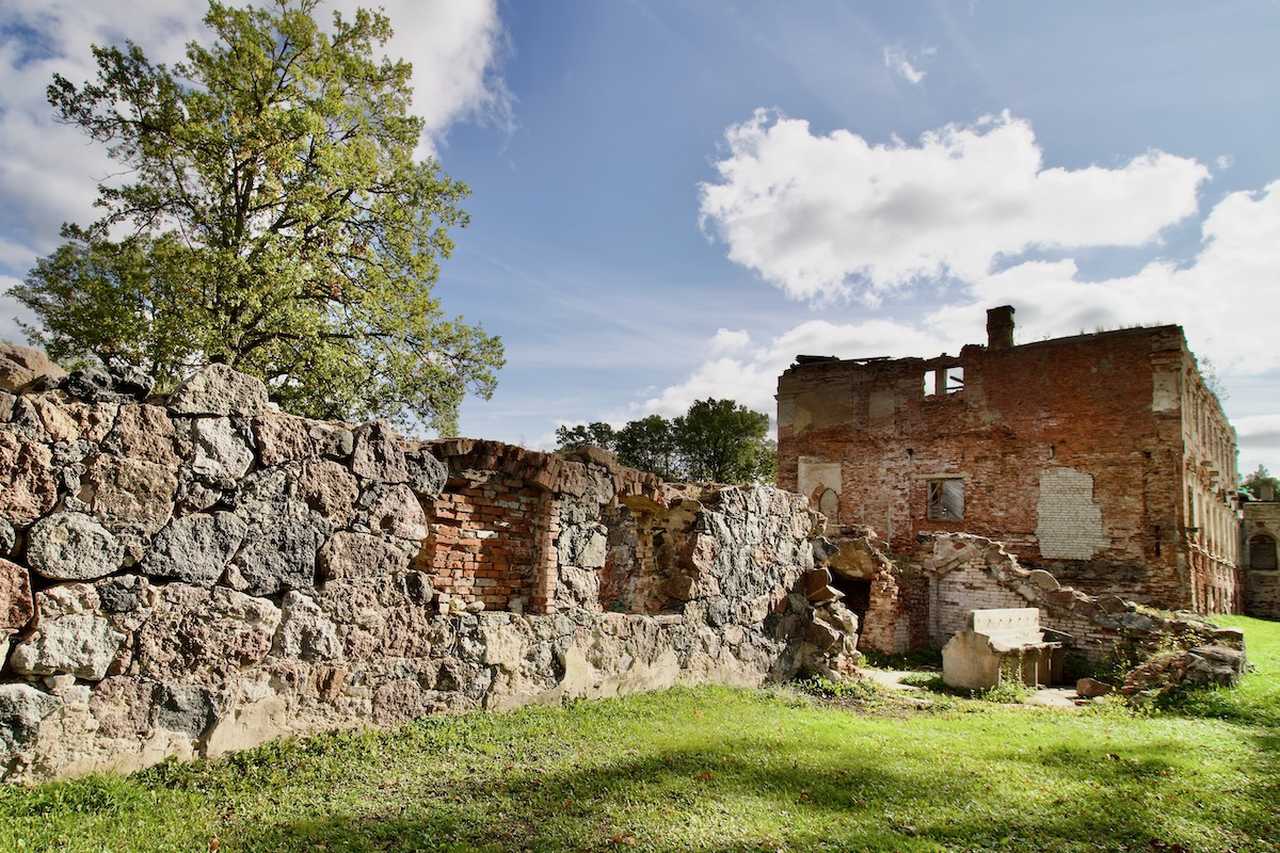
During the latter part of the nineteenth century, Heinrich von Wolff built the Red Castle. This castle was burnt down in 1905 but restored and later extended to house an elementary school from the 1920s to 2004.
Today it is part of the Gulbene History and Art Museum and features a ‘talking wall’ that tells the romantic tale of von Wolff’s love for his wife Marissa for whom he built it.
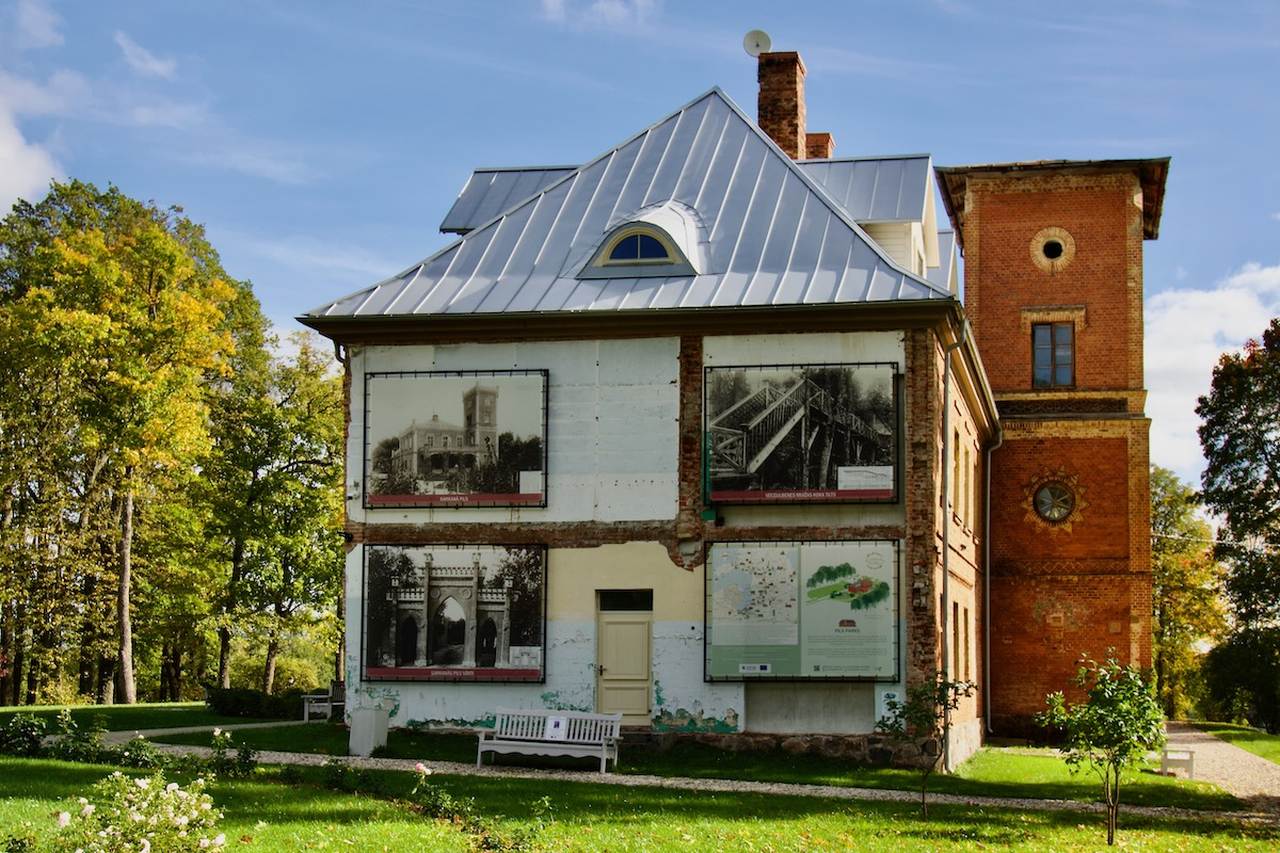
At the other end of town is the Russian railway station. This majestic Russian building is now an educational museum about railways and trains. Interactive exhibits and games provide an entertaining guide to railways through the centuries including how to build up the correct head of steam for a steam engine and generate enough power to operate a model electric train using a bicycle. There is a limited service from this station on the narrow gauge track to Stāmeriena, home to an elegant palace.
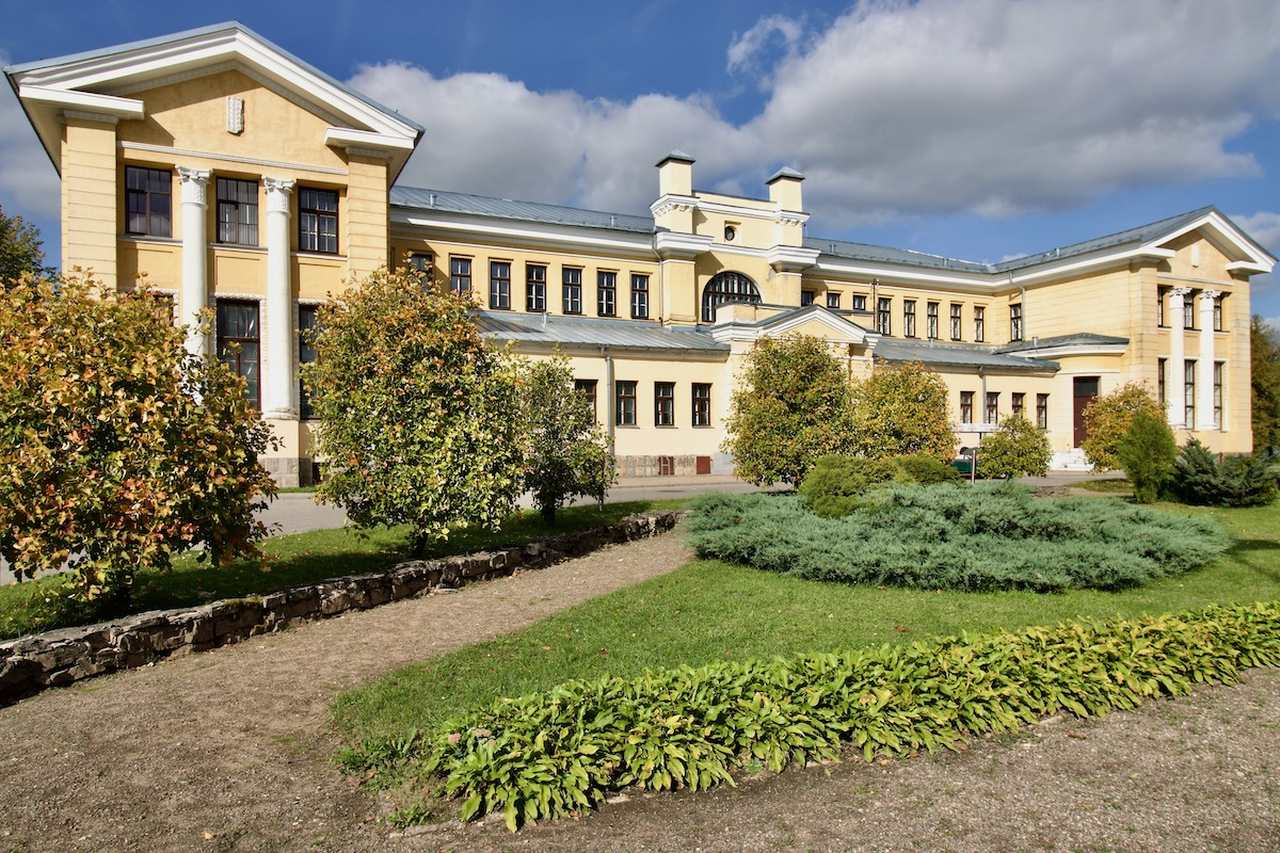
2. Stāmeriena Palace in Stāmeriena, Vidzeme in Latvia
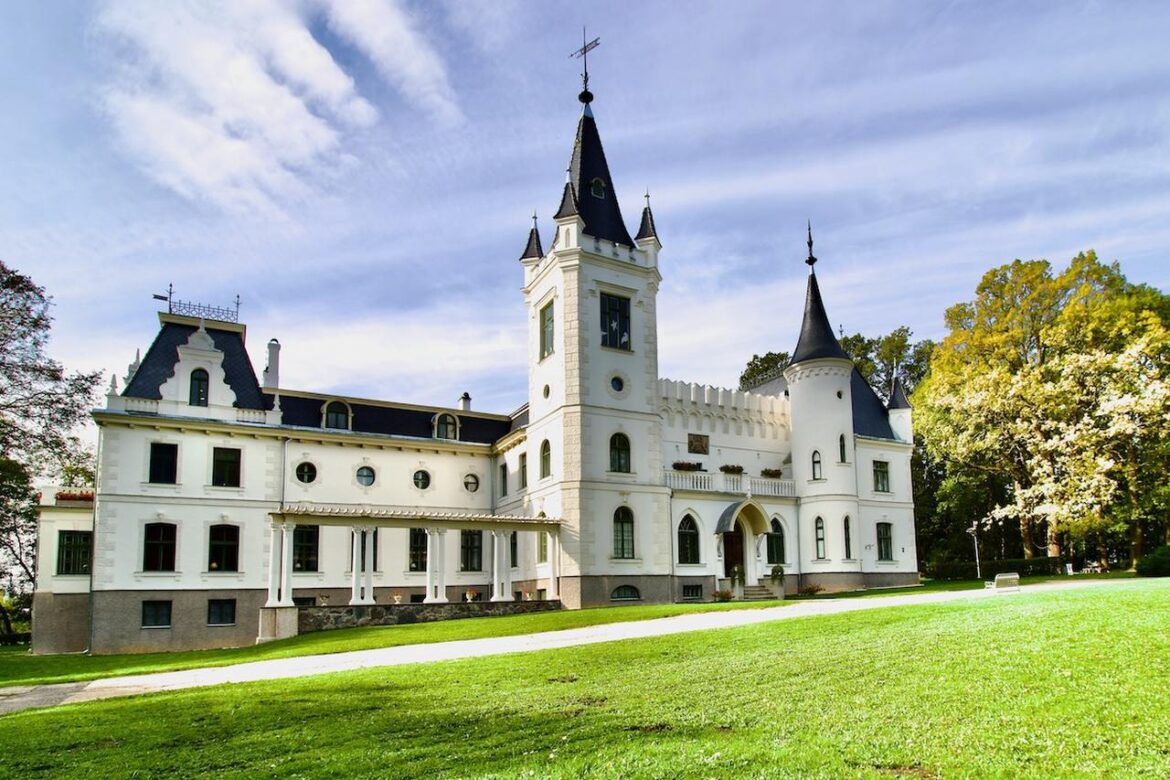
At Stāmeriena Palace we meet the von Wolffs again. The family acquired Stāmeriena manor in 1802 and built the Neo-Renaissance palace during the 1830s. This palace was burnt down by the revolutionaries in 1905 but was restored in 1908 with the addition of Neo-Classicism and Art Nouveau features.
This palace is now under the auspices of the Gulbene municipality which restored the exterior in 2019. The shabby chic interior may be a stark contrast to this renovation but nevertheless provides a fascinating insight into the lives of its former, wealthy inhabitants.
There is a strong Italian influence here as several members of the von Wolff family married Italians including Giuseppe Tomazi di Lampedusa, a world-famous writer. Visitors can enjoy the sweeping views of the surrounding park from the large balcony at the front of the property. Alūksne, which boasts the elegant New Palace, lies at the end of the narrow gauge railway that passes through Stāmeriena.
3. The New Palace in Alūksne, Vidzeme in Latvia
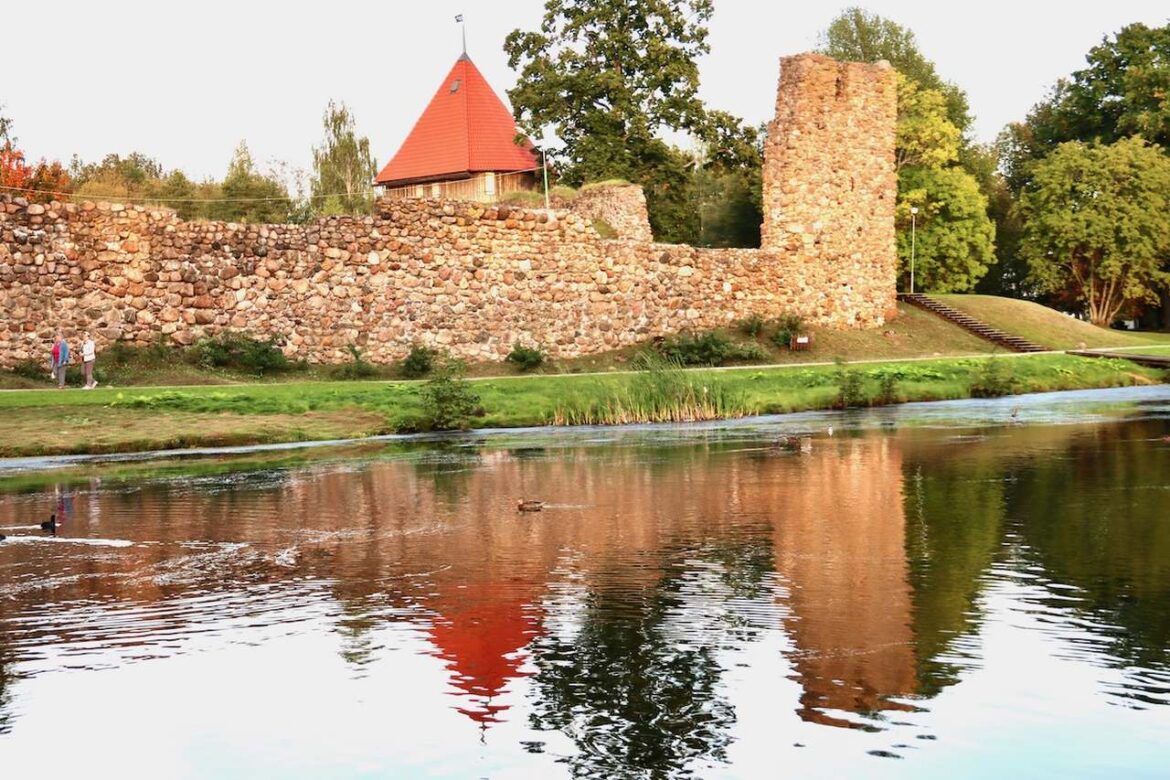
Alūksne is situated on the shores of Lake Alūksne and its original medieval castle (1342), now in ruins, was built on an island in this lake now known as Pilssala (Castle Island). It was destroyed in 1702 during the Great Northern War. One tower of this fortress has been restored and a recreational area has been developed in its ruins. The Temple Hill Park on the shores of the lake is so called as it was once the site of a Latgalian Castle and the remaining mound is topped by the Temple of Fame. This park is also home to the highest sightseeing tower in Latvia affording a panoramic view of the lake and the town.
Alūksne has two palaces. The Lakeshore or Old Palace was a residential estate building constructed between 1793 and 1794 in the Classic style of architecture. Since then it has had some minor reconstructions. In 1932, during the Latvia’s first period of independence, it housed a hospital. Now it is the Alūksne Art School and visits to the building must be booked in advance.
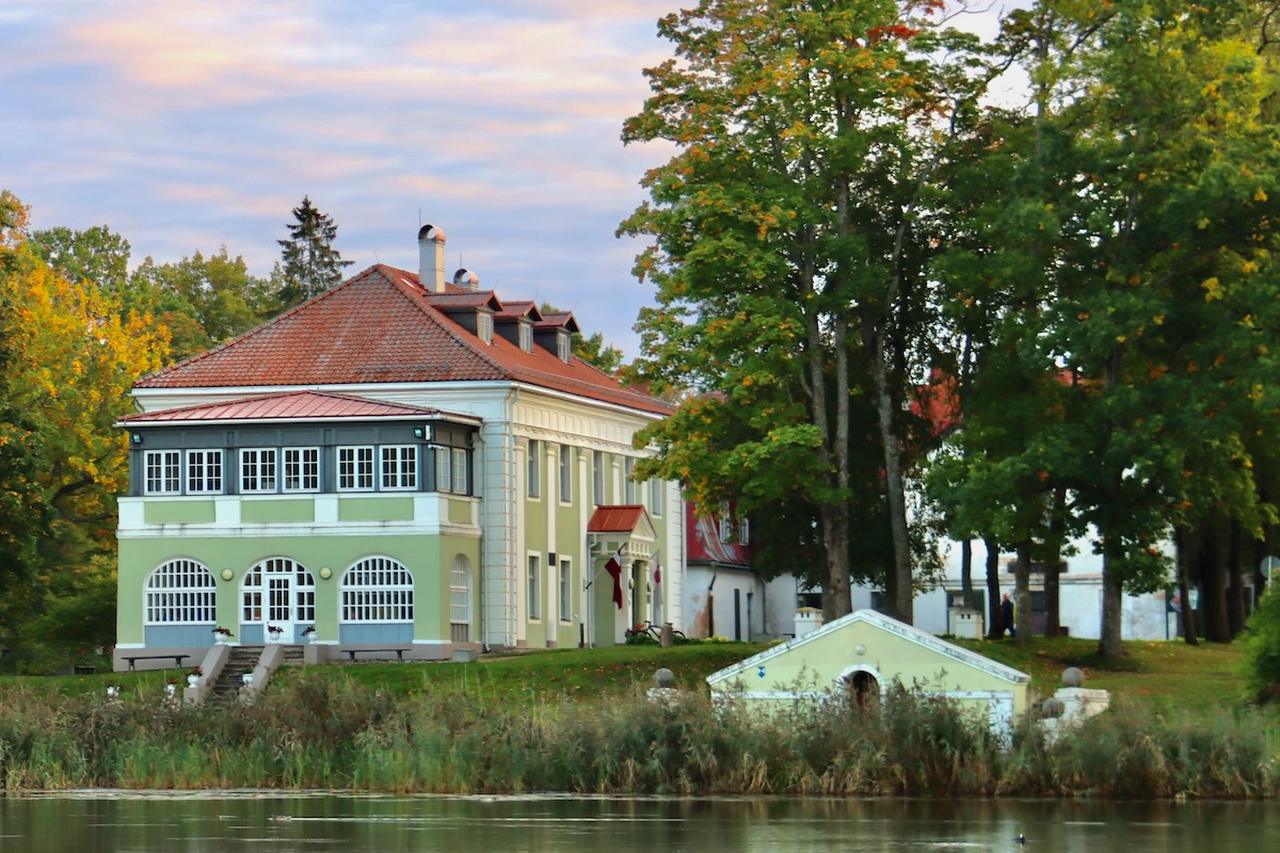
Alūksne’s second palace, the New Palace, is in the city centre. Otto Hermann von Vietinghoff, a member of a Baltic aristocratic family acquired the Manor of Alūksne in 1753. His descendants, Baron Alexander, built the palace between 1859 and 1864, in the English Gothic Revival style. It is surrounded by Manor Park which features some interesting small buildings, a lake, and fountains. The palace was owned by the Vietinghoff Family till the Agrarian Reform in 1920. In 1959, the Alūksne Museum was established and includes expositions illustrating the cultural and historical heritage of Alūksne. A second, privately run nature museum, is the Vides labirints (Environmental Labyrinth).
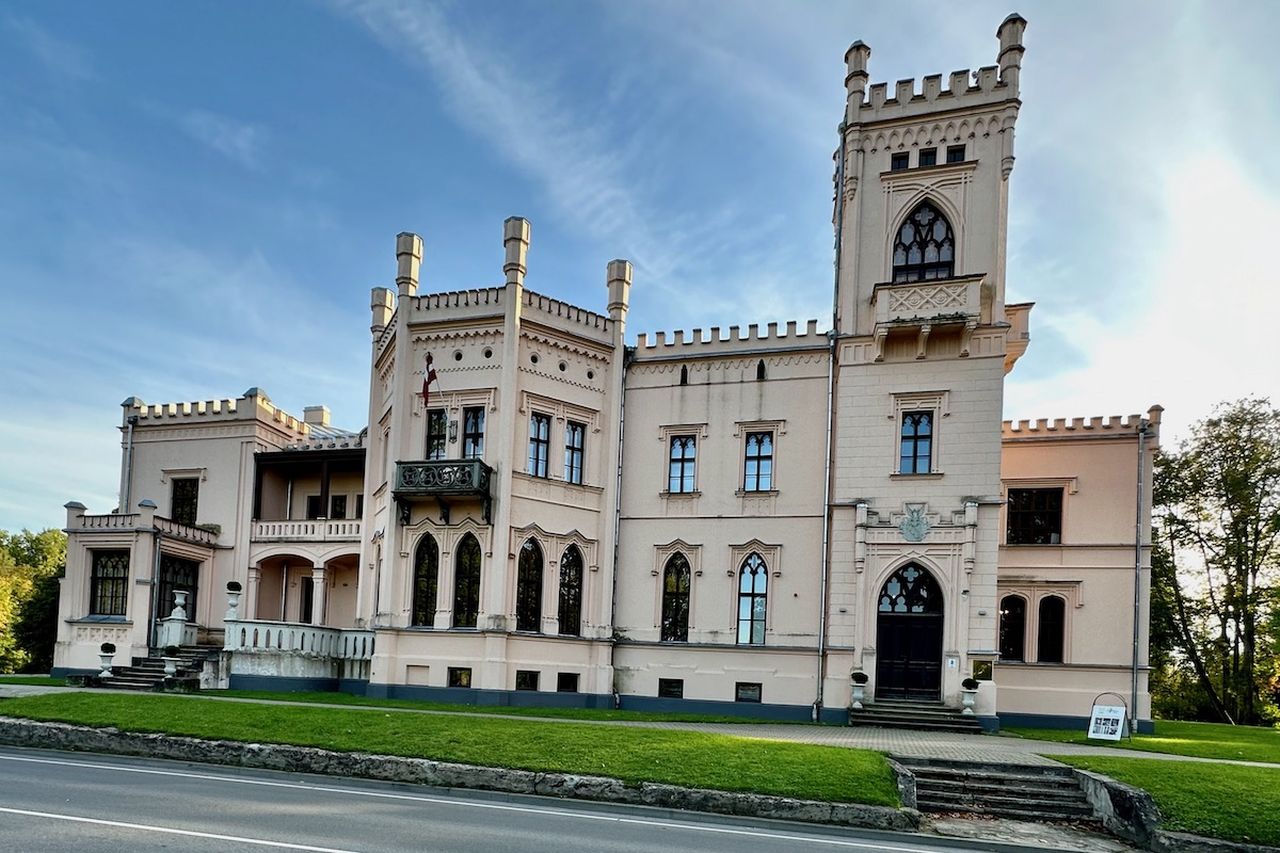
Medieval Valmiera was a fortified town and its inhabitants lived within the walls of its thirteenth century wooden castle. This castle was rebuilt on a regular basis until finally, it was replaced with a stone castle.
This castle proved vulnerable to cannonballs and its walls were strengthened by earth ramparts during the seventeenth century. But these could not save it and it was destroyed during the Northern War in 1702. After the war the inhabitants of the town plundered the stones from the castle for their own buildings. Very little remains of the original stone castle today. The story of Valmiera and its castle is related to Valmiera Museum. This museum occupies several buildings including a new exposition, de Woldemer, which straddles some seventeenth-century foundations.
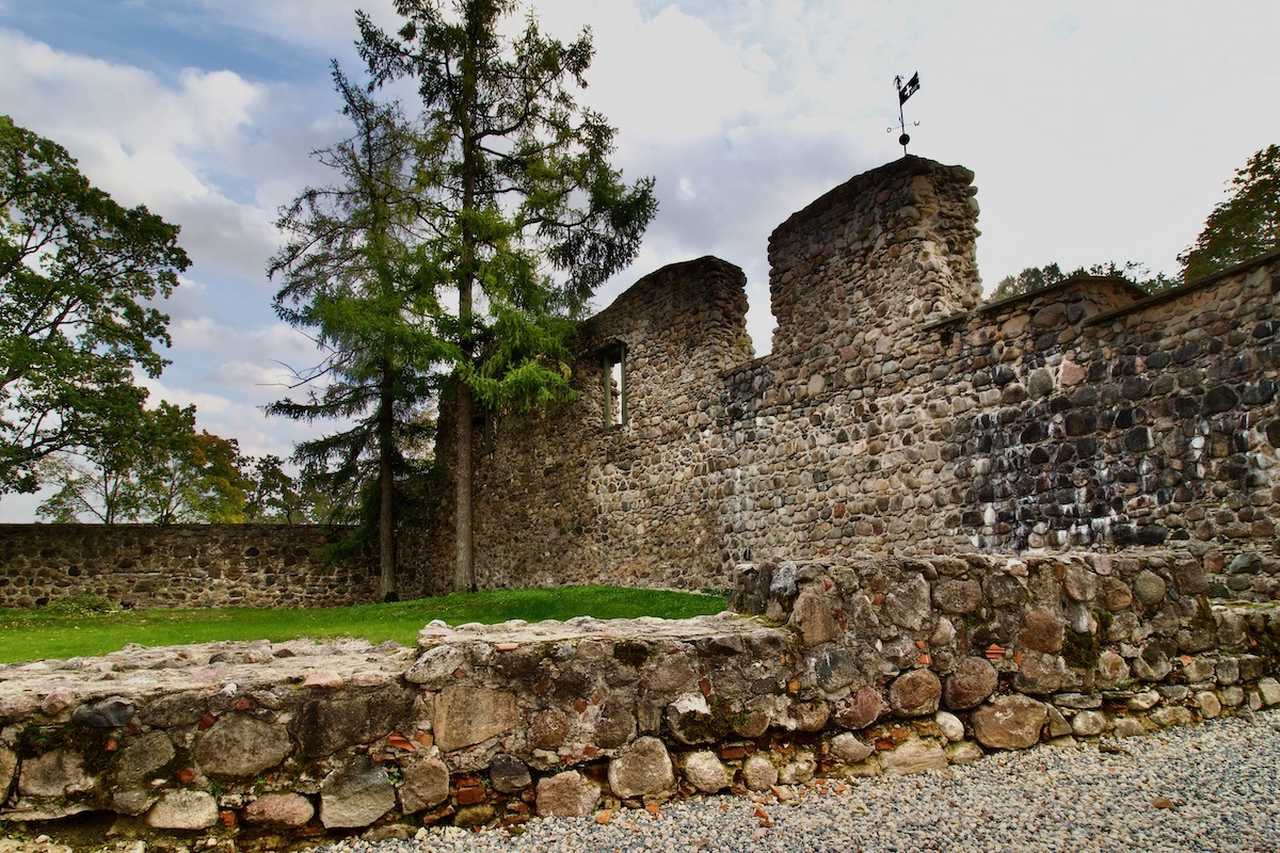
Valmiera Museum is in the Historic Centre of the town. Behind the remains of the castle wall, visitors will find 12 buildings that tell the story of a town that was once a member of the Hanseatic League. They included the oldest wooden building in Latvia, the Old Pharmacy, and a Pizza Restaurant that occupies another old wooden building. Cēsis also boasts an Old Livonian Castle where visitors can explore by the light of a lamp.
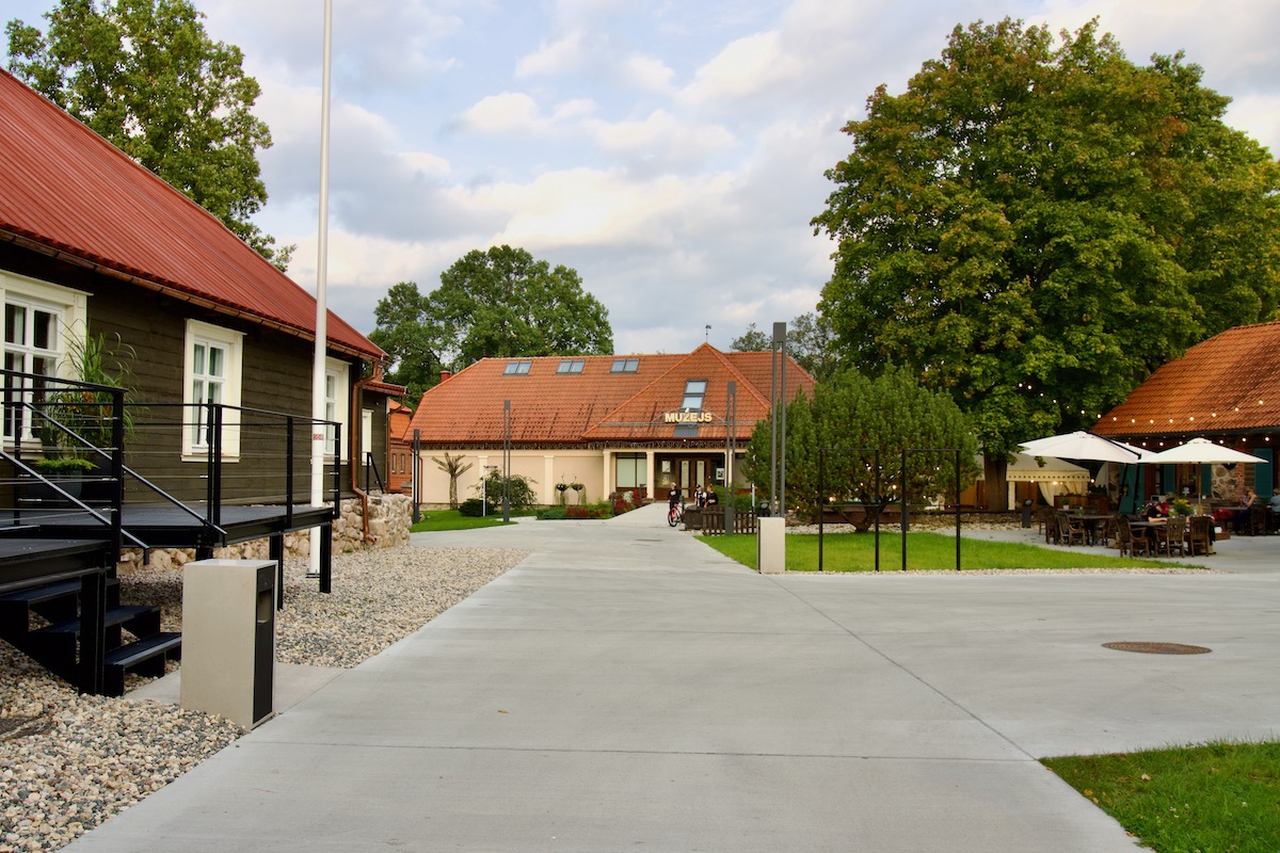
4. The Castles of Cēsis in Vidzeme, Latvia
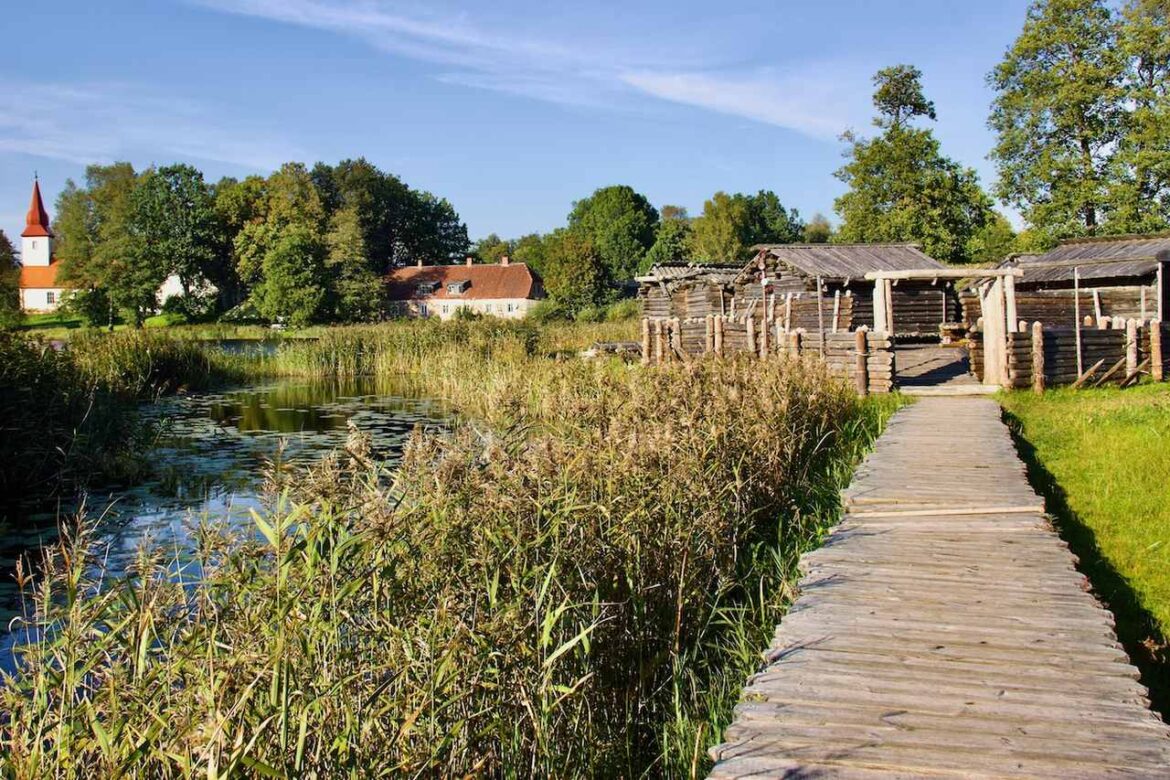
Founded in 1206, Cēsis is the third oldest town in Latvia and one of the best-preserved medieval cities in the Baltics. The town grew up around its original, thirteenth-century castle. What we see today is the sixteenth-century version surrounded by a beautiful park that features a medieval kitchen garden. Entrance to the castle is through the Manor House which is also a museum. Visitors to this museum can climb to the top of its tower and look down on the castle and its surroundings. Cross the moat and enter the castle to explore its ruins which include some complete rooms.
During the summer season, it is also possible to play medieval games and learn about ancient crafts. Not far from Cēsis is the fascinating Āraiši Archaeological Park and a reconstruction of a lakeside settlement.
Our journey through the Latvian region of Vidzeme ends at the Āraiši Archaeological Park, close to Cēsis. This site surrounds the ruins of the fourteenth-century Livonian Āraiši Stone Castle which was destroyed at the end of the sixteenth century.
It also includes a fascinating reconstruction of a fortified wooden village built on a platform of logs that stretches out into the waters of Āraiši Lake by the Latgalian, an ancient tribe that lived in this area. This unusual village was discovered by archaeologists in 1965.
Getting There
Riga, the capital of Latvia, is well served by regular direct flights from London and regional airports with several airlines including Air Baltic, British Airways, Easyjet, SAS, Ryanair and Wizz Air. Riga is served by a good public transport system to its main cities including Alūksne, Gulbene, Cēsis and Valmiera. Alūksne, Gulbene and Stāmeriena are also accessible via the narrow gauge railway that runs between these stations.
Valery Collins is the Experienced Traveller
An excellent raconteur, Valery has been writing about her experiences on the road since she started travelling 26 years ago. After publishing four books she turned to online travel writing.
Credit: Source link

